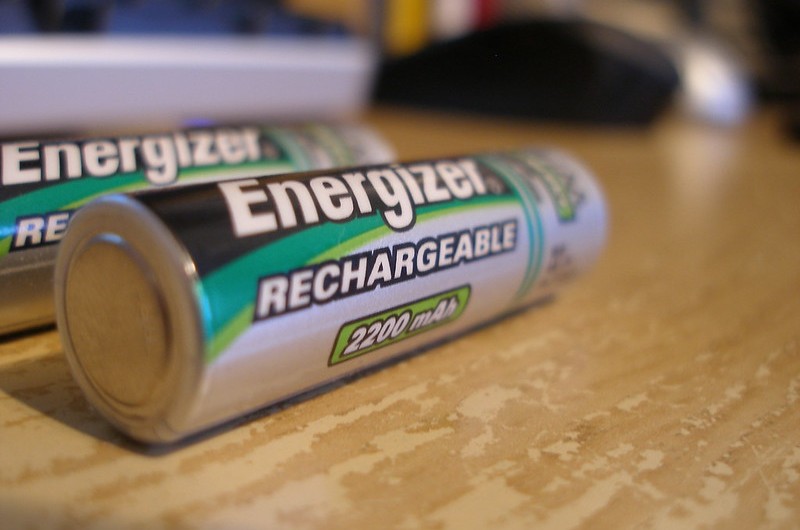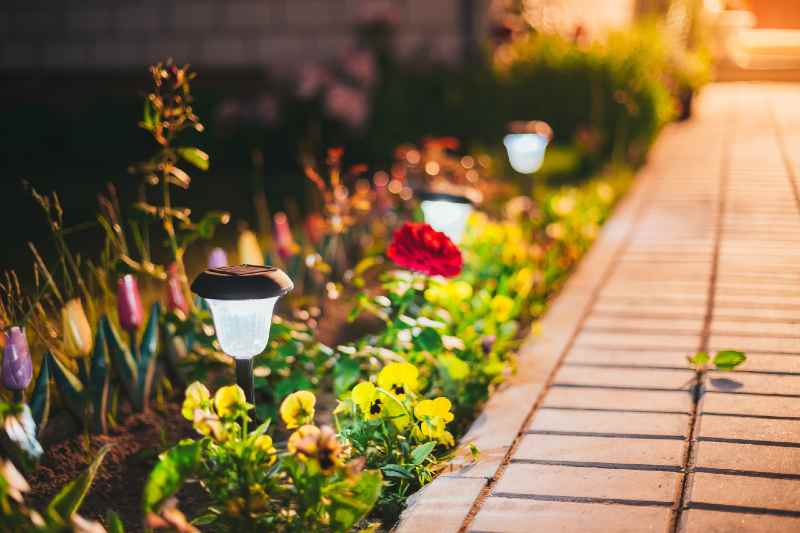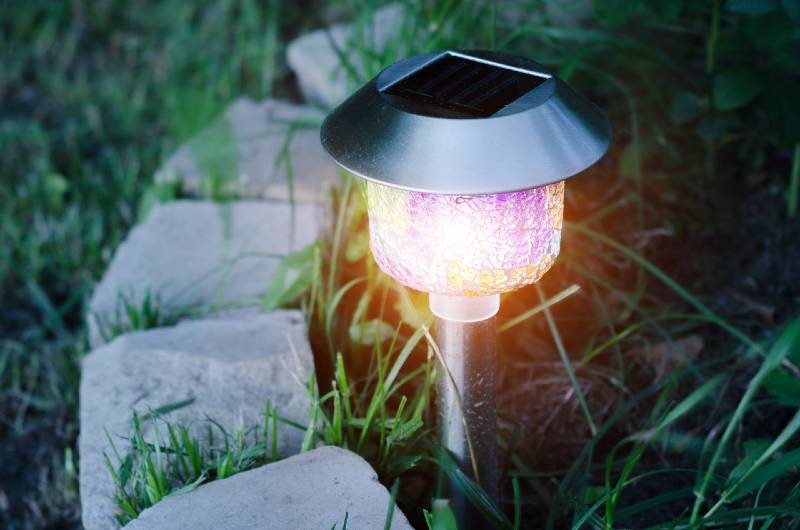Winter’s on its way, bringing shorter days and chilly nights.
It’s the perfect moment to think about how to store your solar lights over the winter.
That’s why I’ve put together some easy-to-follow tips on how to store solar lights over the winter while they’re not in use.
In this guide, I’ll show you, step by step, how to get your lights ready, give them a good clean, and tuck them away safely.
This way, they’ll be all set to light up your yard again as soon as spring rolls back around.
Key Takeaways
- To store your outdoor solar lights properly for winter, turn off the solar lights to prevent battery drainage and protect the light sensors from wear and tear.
- Remove the entire solar light from the ground, clean it thoroughly, and ensure the solar panel is free of dust.
- Take out the rechargeable batteries to prevent leakage and corrosion, then wrap them in bubble wrap or packing paper.
- Wrap the glass heads in bubble wrap or blankets, place all components in a sturdy plastic box, and store them in a cool, dry place like a garage or well-insulated attic.
Why Should You Store Your Solar Lights During Winter?
You should store your solar lights during winter if you want them to last longer and keep working well.
Even though they’re made with tough, corrosion-resistant materials like plastic and usually have a pretty good waterproof rating, they’re not invincible.
With time, the seals that keep the water out can wear down.
Once that happens, moisture might sneak in, leading to short circuits or other damage to the inside parts of your lights.
Related article: Do Solar Lights Work In Winter?
How to Store Outdoor Solar Lights for the Winter?
1. Ensure the Solar Light is Turned Off
Just like when you’re about to fly or go on a long journey, you turn off your electronic devices.
It’s the same with your solar lights when you’re ready to tuck them away for the winter.
If you leave them on, the batteries can run down completely and might even stop working properly way too soon.
Also, keeping the lights on without enough charge can be tough on other parts of the light.
For example, solar lights have these nifty sensors that figure out when it’s dark and turn the lights on automatically.
If these sensors keep trying to work without enough power, they could get worn out.
And if your lights have that automatic feature, they might keep trying to turn on during those gloomy winter days, which just uses up the battery even more.
Related article: How To Charge Solar Lights Without Sun?
2. Remove the Entire Solar Light Device from the Ground
Once you’ve got your solar lights switched off, it’s time to get them out of the ground.
This part can get a bit tricky, especially if you’ve got those in-ground path lights that like to nestle deep into the soil over time.
Ensure to dig around a bit and find all the pieces, including any separate solar panels, so you don’t leave anything behind.
Once they’re out, I like to give each light and panel a good wipe-down with a clean, damp towel.
It’s easy for dirt and bits of leaves to stick to them over time, and you want them nice and clean.
The solar panels especially need a clear surface to work their best.
Since they rely on soaking up as much light as possible to charge up, even a little layer of dust can mess with that.
Related article: How To Choose The Best Solar Lights
3. Take Out the Rechargeable Batteries from the Solar Panel
I know it might not seem like a big deal, but trust me, I’ve learned the hard way that skipping this simple step can cause a lot of trouble down the road.
To put this into perspective, think of a battery as a little box that holds a chemical reaction.
When they are left in your solar lights during the cold winter months, the chilly weather slows down those reactions, which makes your batteries less effective.
What’s worse, the cold can cause the batteries to leak or even burst, leading to corrosion.
This kind of damage can wreck the battery compartment and the internal parts of your solar lights, possibly ruining them.
Here’s a straightforward way to handle it: Take a minute to remove the batteries from each light.
I know it sounds like a bit of a hassle now, but it’s a crucial step to keep your lights in great shape for next season.
Once you’ve got the batteries out, wrap them up in bubble wrap or packing paper to protect them from moisture and other nasty stuff that could damage them.
For storage, pick a spot that’s cool and dry.
I usually put them on a shelf in my garage or a storage bin in the basement.
4. Wrap Glass Heads in Bubble Wrap
Your solar lights are pretty delicate, especially those glass heads that can easily break or crack if they’re not handled right.
To ensure they make it through the winter without any mishaps, you need to wrap each glass head up nicely and snugly in bubble wrap.
This will give them a good cushion and help keep them safe from any knocks or bumps they might get while being stored.
If you don’t have any bubble wrap lying around, no worries—spare blankets or even some packing paper can do the trick just as well.
After you’ve got those glass heads wrapped up, pop them into a sturdy cardboard box.
This step is key because a lot of these glass parts have solar panels attached, and any damage there can be a big headache.
5. Place All Solar Light Components in a Box
After you’ve got all your solar light parts wrapped up—especially those fragile glass heads and the batteries—it’s time to stash them away safely until next season.
I’m a big fan of using plastic storage boxes rather than cardboard ones for this.
Why?
Well, plastic is better at keeping out moisture, which is key for avoiding rust or mold while your lights are hibernating over the winter.
Plastic boxes are also tougher and won’t cave in if things get shuffled around in your storage space.
When you’re picking a box, ensure it’s roomy enough so you don’t have to jam everything in there.
I always throw in a cushy layer of bubble wrap or packing paper at the bottom of the box for a little shock absorption—it’s a simple step that can save your gear.
As you pack the box, keep the heavier items on the bottom and layer the lighter, more delicate items on top to avoid any crushing.
I also like to add an extra sheet of bubble wrap on top of everything once it’s all in there, just to be safe.
Finally, seal up the box well and tight, and slap a clear label on it.
That way, you won’t have any surprises or need to rummage around when it’s time to set everything up again.
6. Store Solar Lights in a Dry Place
Now, let’s wrap this up with a crucial tip—picking the perfect spot to store your solar lights during the off-season.
These lights, especially the ones made of materials like aluminum, really hate moisture.
Moisture is the main troublemaker that leads to rust and corrosion, and trust me, you don’t want any of that—it can seriously shorten the lifespan of your lights.
From my own experience, the best spots for storage are your garage or a well-insulated attic.
These places are usually dry and keep a steady temperature, which is exactly what you need to keep your lights in top shape.
I also prefer to avoid basements and outdoor sheds; they might seem handy, but they often get damp or even leaky.
I usually use a corner of my garage for storing these lights.
For this task, I’ve set up a little area just for seasonal items like this—it keeps everything neat and out of the way.
However, if you’re thinking about using your attic, just ensure it’s well-insulated to prevent any big temperature swings that can mess with your lights.
Related Article: 12 Reasons Why Your Solar Lights Not Working & How To Fix
FAQs
Can Solar Lights Be Left Out All Winter?
Solar lights can be left outside all winter, but it’s better to store them to extend their lifespan and prevent damage from harsh weather conditions.
What Do You Do With Outdoor Solar Lights in the Winter?
It’s best to clean them, remove the batteries, and store them in a dry, cool place to prevent damage and ensure they are ready for use in spring.
Should You Bring Solar Lights Inside in Winter?
You should bring solar lights inside in winter, although they are designed to withstand some outdoor conditions, doing so can prevent potential damage from severe cold and moisture.
Should You Take Batteries Out of Solar Lights in the Winter?
You should take batteries out of solar lights in the winter to avoid damage from leakage and corrosion, which can extend the life of both the batteries and the lights.
Conclusion
As promised, we’ve gone through all the steps to safely store your solar lights over the winter.
Remember, a little time spent now on proper care pays off by keeping your lights going strong for years.
Here’s a handy tip: label each part as you pack it away.
This small move will make your life a lot easier when it’s time to set them up again in spring—no more guessing games.
Do you still have questions or need more tips on caring for your outdoor gear?
Just drop a comment below or reach out, and I’d be happy to help!
Join our solar microdosing newsletter and get bite-sized, easy-to-understand insights into the world of solar energy.
From how solar panels work to building your own DIY solar system, we’ve got you covered.









Why would storing in a garage be better than a basement? And, what if my solar lights do not have an ‘off’ switch? My batteries also don’t seem removable and are built in the solar head.
The garage is generally better because it tends to be less humid, less prone to pests, and cooler than the basement — especially if insulated. But you can still store the lights in the basement if you want to. Garages are just more optimal.
I can’t really answer the second question before knowing the model of your solar lights. Feel free to reach out with more details.